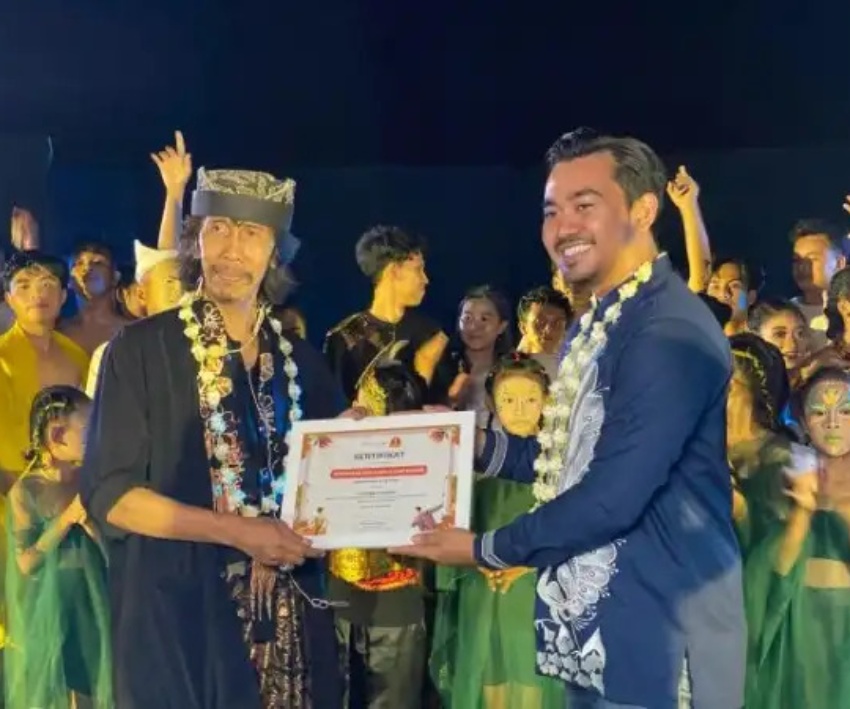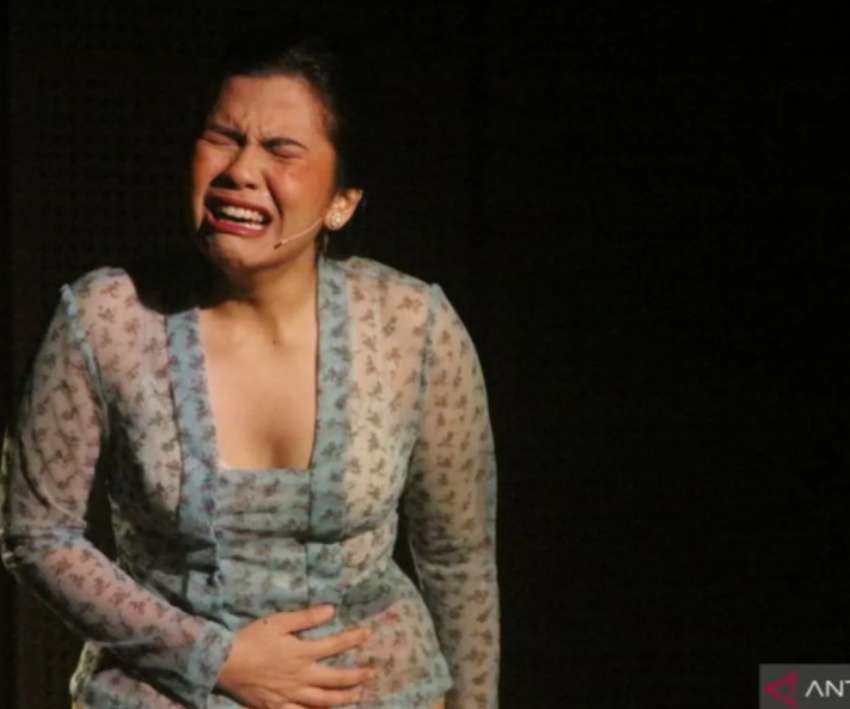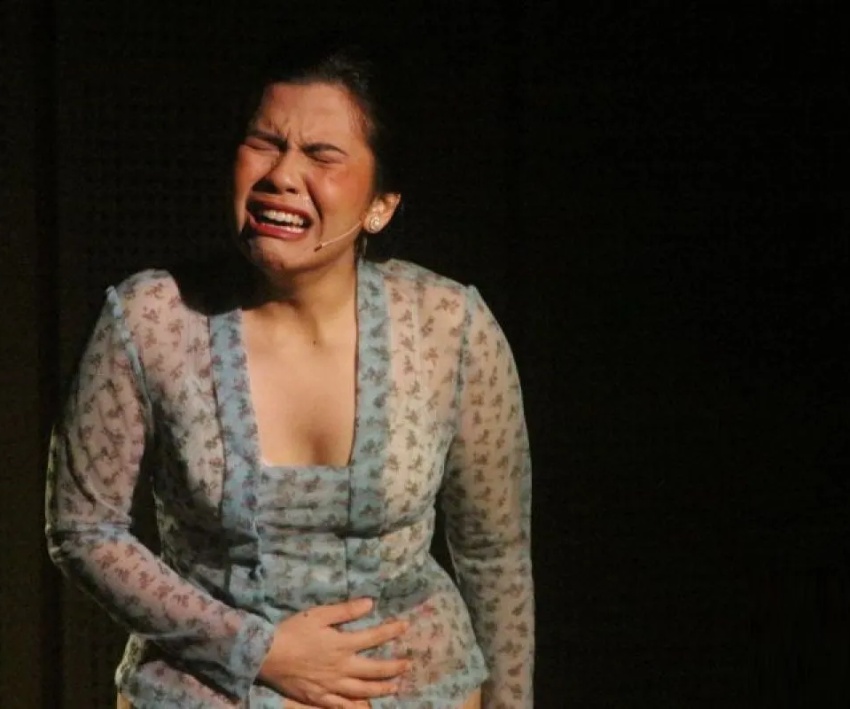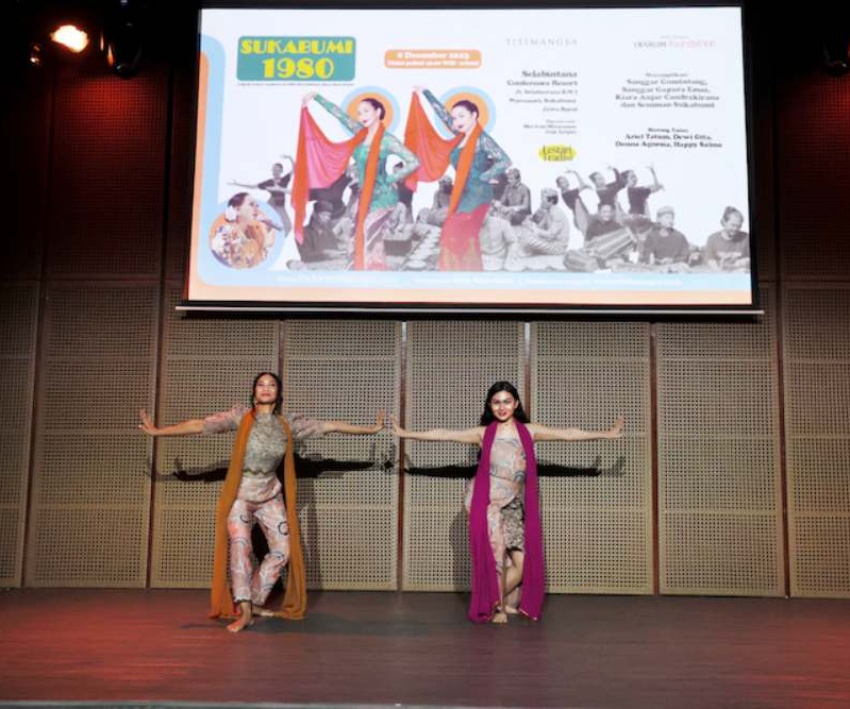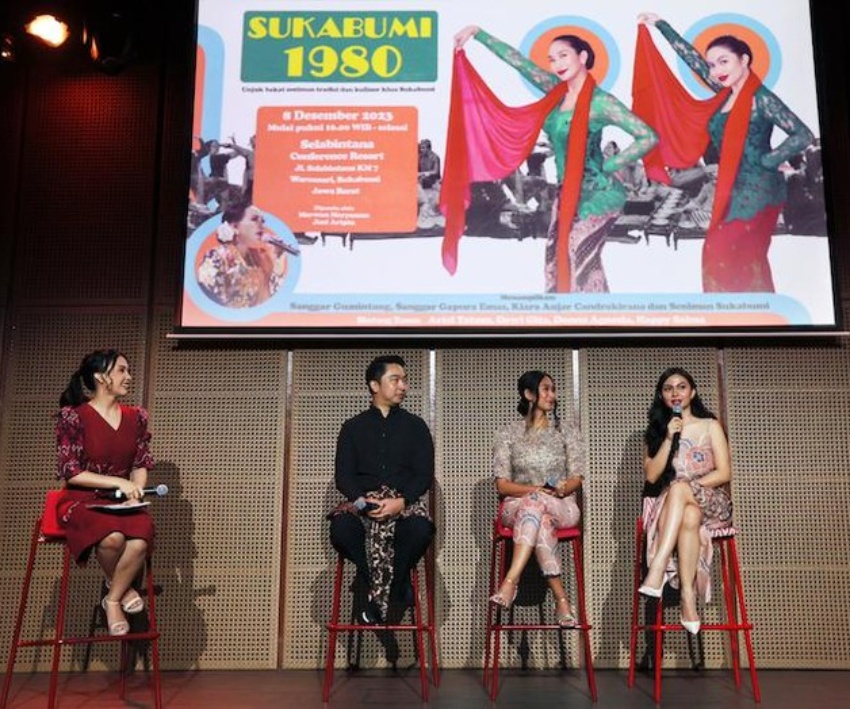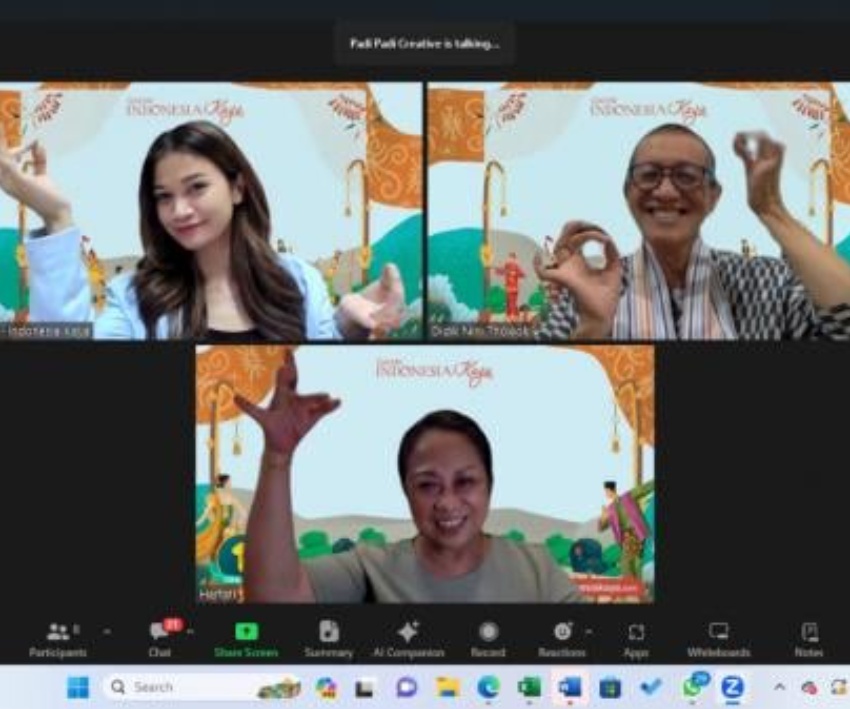
Dance reaches beyond the physical and through the virtual 'wall'
Instead of staying confined within the frame of digital monitors, Indonesian dancers are finding new ways to give freedom to their expression through movement.
Sharing the screen on a video streamed to Instagram Live, dancers Try Anggara in Jakarta and Putri Wartawati in Banten bridged their geographical isolation as they danced through their homes and interacted with each other and their viewers.
In one scene, Putri talks about the importance of following the health protocols as the camera zooms in to the movement of her hands, while Anggara interprets it into a bigger, full-body movement. In another scene, they danced in the kitchen, using dishes and a broom as props.
Streamed as part of the Indonesian Dance Arts Foundation’s “Improvisession”program, the experimental performance in May showed that physical isolation is no limitation.
Poet and essayist Esha Tegar Putra referred the livestreamed show as a case in point for how digital technology could help dance grow exponentially, both as a performing art and as a cultural study.
While it started as an alternative “stage”for giving expression to their artistic form, Esha pointed out at least five takeaways from numerous dance performances and talk shows held online since the worldwide COVID-19 pandemic was declared in March.
“In the beginning, the dance community felt uncertain about [switching] from live stage performances to the virtual stage. Now, we can see some new or altered perspectives in a dance performance,” Esha said on Sept. 28 at the Jakarta Arts Council’s “Dance to Live, Live to Dance”virtual public discussion.
He said that an online event accelerated the spread of knowledge by its very nature, as it could be accessed from anywhere at any time. Esha said this allowed dancers to refer to their repertoire and open up their video archives and release them for public viewing.
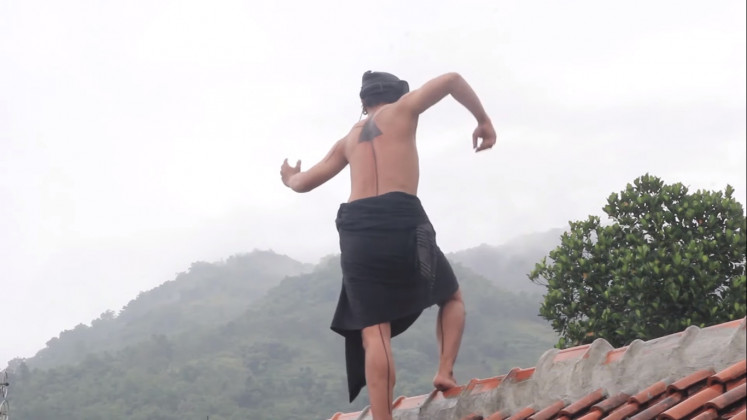
Dancer on the roof: Dancer Erri Trihartono explores movements atop a roof in "Usik" (Disturbance). (Distance Parade/YouTube Budaya Saya/-)
“As someone in the audience, I realized that the virtual stage redefined the spatial perspective of a stage for a festival or a performance, which is traditionally understood to be a space where performers interact with the audience,” said Esha.
“Another takeaway is the dancers’ adaptability in responding to whatever happens around them in a small [way], dancing in the toilet, on the bed, or in the kitchen, a private setting I've never seen on a trapezium stage,” he pointed out.
Esha said that the current wave in virtual performances also raised a new perspective on ruwat (warding off) and the original purpose of traditional Indonesian dances, which were performed as part of rituals to ask for God’s blessings or to prevent misfortune.
“It’s as if dance is starting afresh with the dancers purifying their bodies with new routines while giving audiences performances they have never seen before,” he said.
Program officer Rieka Nur Asy Syam of the Bakti Budaya Djarum Foundation, which runs the Indonesia Kaya art and culture events, said that dancers had responded enthusiastically to transitioning its dance programs to digital space.
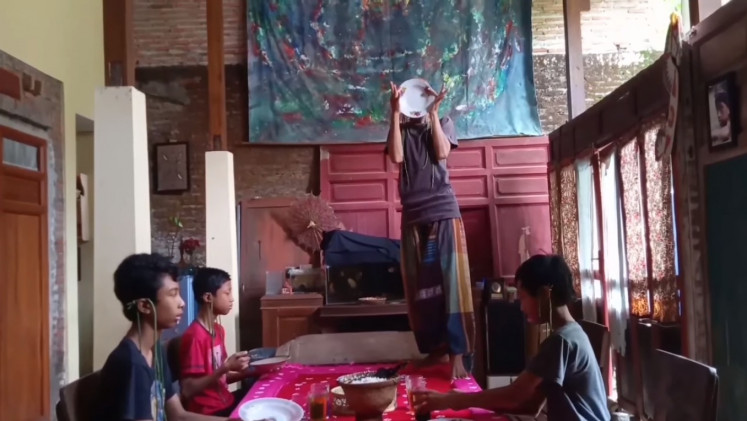
Creativity in isolation: Mugiyono performs on a table in "Ruang Makan" (Dining Room) to the accompaniment of sounds made using dishes and utensils. (Distance Parade/YouTube Budaya Saya/-)
For its annual national dance competition, Indonesia Menari (Indonesia Dances), Bakti Budaya Djarum made changes to its usual format to allow applicants to submit their own choreography to the event's theme song.
“We are trying to develop programs to accommodate the dancers’ desire to express their art and support those who are eager to make their own virtual shows,” said Rieka.
“The digital [format] allowed us to see dances we don’t usually see in the conventional shows. It also allows us to reach dancers nationwide as well as those living abroad, optimizing our promotional efforts,” she noted.
Mariska Febriyani of Bina Ballet Indonesia, a foundation established by dancers to promote ballet and contemporary dance that also runs the Ballet.id exchange network, said it had to postpone the biennial Indonesia Gala in 2019 because of the election, and that the pandemic had prolonged the delay.
“But it opened opportunities to work together with nonprofit organizations in Guatemala, Nigeria and Panama in creating a video of our program with the street children of Sanggar Anak Akar to UNESCO,” she said.
Although it took some time for Ballet.id to adapt to the current situation, it has held master classes featuring world-renowned dancers to raise funds for the “Seniman Bantu Seniman”(Artists Help Artists) solidarity campaign, which supports artists and artists’communities affected by the epidemic.
“More essential than the relief aid is the hope and the encouragement we offered for them to continue their work as artists. We are planning to hold a charity show with a number of dance communities, with the proceeds to be donated to artists as well,” said Mariska.
Rusdy Rukmarata of EKI Dance Company, the current advisor to the Jakarta Arts Council’s dance commission, said that the health emergency had also taught him the importance of collaboration through his experience with the Lutung Kasarung musical in August.
The last of the six shows in the #MusikalDiRumahAja (#MusicalAtHome) by BOOW Live and Indonesia Kaya was a collaborative piece created by film director Nia Dinata with Rusdy as stage director and choreographer. The performance, based on a folktale, racked up more than 500,000 views on YouTube over the seven days it aired. The five other pieces in the virtual show recorded over 1 million views.
“This kind of collaboration blurs the lines of who [contributes] the most to the performance. Putting our egos aside, we could reach more audiences and create a new form of performing art,”said Rusdy. “We may be physically confined, but the digital platform moved us [beyond that].”
Eminent performance artist Melati Suryodarmo expressed her hope that dancers would look back now at how dancers of the past continued to work within the limitations of their time.
“Let us contemplate how to [find] our bigger self in this [tight] space and develop ideas from there. Instead of pitying ourselves, we can use this time to hone our skills, rebuild the community and strengthen our networking,” she suggested.
Source. https://www.thejakartapost.com/life/2020/10/13/dance-reaches-beyond-the-physical-and-through-the-virtual-wall.html
- Pagelaran Sandyakala Smara Torehkan Prestasi Gemilang di Ajang PR Awards Singapura - Suara Merdeka Jakarta
- Jaipongan Lewat 'Nyimas Kawung Anten', Dewi Gita-Denada Tunjukan Girl Power (detik.com)
- Ribuan Penonton Terpesona Saksikan Pementasan Sendratari Sikep Sang Timur Tlatah Alas Purwo - Jatim Times
- Lagu Baru Denada Bakal Beredar di Lebih 185 Negara - Seleb Tempo.co



